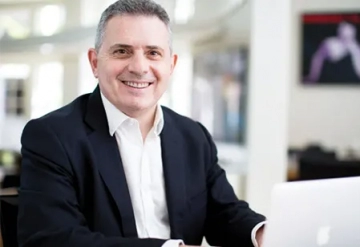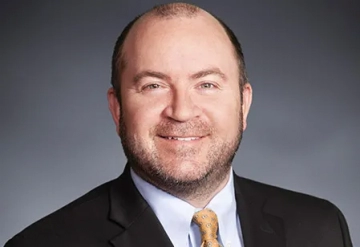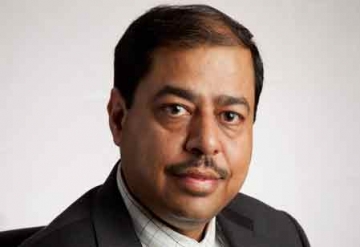THANK YOU FOR SUBSCRIBING

 Scott Beckman, Director of Sustainability, PCL Construction
Scott Beckman, Director of Sustainability, PCL ConstructionIn the early days of sustainable building, “going green” meant diverting some of our job-site waste or using recycled materials. A good start, but few of us could have predicted how green building solutions would evolve over the next two decades.
Today, builders and clients alike are increasingly concerned with making buildings more energy efficient, reducing overall emissions and creating sustainable job sites. Yet green building solutions do more than help just the environment. As the director of sustainability at PCL Construction, I’ve learned they help builders be more competitive, too.
I’ve worked in sustainability a long time, and I’ve seen construction evolve with the advent of LEED, green building codes, sustainable technology and more. Technology is crucial to this evolution, and materials such as low-carbon concrete and mass timber are gaining traction. But these are only a few pieces of the puzzle. We’re witnessing a profound cultural shift and a greater demand for sustainable solutions, driven by the public, our clients and our own internal objectives.
I want to share my insights on the reasons that a builder’s success depends on the ability to not only meet these demands but anticipate them and educate clients about them.
LEED Certification Leads to Bigger Questions …
As a builder, we must understand the kinds of green building solutions that clients look for. In the past, LEED certification commanded a lot of attention. These days, LEED certification is still important but is just one part of the sustainability suite. Clients are asking deeper questions about green building:
- What is your business doing internally?
- How can you reduce our building’s energy requirements?
We’re witnessing a profound cultural shift and a greater demand for sustainable solutions, driven by the public, our clients and our own internal objectives
The bottom line is that clients want to do business with companies that are aligned with their own sustainability values and objectives. They’re interested in net-zero buildings, low-carbon materials and highly efficient envelope structures, for example, because they’re responding to the same cultural changes we are as builders.
… and Leads to Building for a Sustainable World
The real opportunity lies here: If clients respond to the same needs as we do, we can play a leadership role and add value by being on the leading edge. “Sustainability” means something different to every builder, and every client has different needs.
At PCL, however, we believe our responsibility as builders is to lead by example and drive transformational change in our industry. Our philosophy – which focuses on building for a sustainable world – goes far beyond a single project. It’s a core value that our clients appreciate.
Take Embodied Carbon …
Until recently, builders focused on the energy required to power, heat, cool and ventilate buildings. By improving energy efficiency, high-performance structures can now have net-zero emissions–a feat that was remarkable 20 years ago. But embodied carbon goes further than net-zero emissions: it’s the total amount of energy required to extract, produce, manufacture, transport and install materials. This sum can be significant, so jurisdictions such as the cities of Vancouver and Los Angeles have set goals to dramatically reduce embodied carbon.
PCL partners with supply-chain leaders to share knowledge and identify opportunities to minimize the embodied carbon in materials used during construction. We’re also developing methods to source and use products that have lower emissions over their life cycle. We can then educate our clients about embodied carbon, and as more and more clients understand itsvalue, our company stands out.
… or Take Our Job Site Insights™
With ourJob Site Insights™ smart construction platform, smart sensors are outfitted through out a building during construction. They monitor temperature, humidity, pressure, leak detection and more, sending that data to the cloud in real time so we can quickly correct any issues. This can significantly reduce energy usage.
On a tower in downtown Edmonton, Alberta, Job Site Insights™ saved enough energy from electric heaters to power 43 homes for a year. It reduced usage of gas heaters by 46 percent, saving the equivalent of 936,000 liters of gasoline. Job Site Insights™ creates an opportunity for us to be proactive with our clients by demonstrating how our technology has both environmental and financial benefits.
Helping Our Clients Helps Us
Besides adding value for clients, sustainability helps organizations like PCL improve their internal processes.
At PCL, we have a network of people across our offices who are known as Sustainable Construction Advisors. They provide expertise that helps our teams deliver high-performing projects, and they work collaboratively with clients to reduce their overall environmental impact.
The more proactive we can be and the more we get involved from the get-go, the more we prove our value. Whether we provide more sustainable options through costing, designing, or procuring materials, we can deepen our relationship with our clients. “Sustainability,” after all, is no longer a buzzword, and builders can’t afford to treat it like one. It’s our opportunity to lead.
Read Also
Development of the Logistics Warehousing Market in Brazil
Driving Innovation and Preserving Tradition
Operational Leadership VS Field Leadership in the Utility Construction Business
People-First Innovation: Developing Virtual Design and Construction (VDC) Training Programs to Empower Field Team Members
Sustainable Projects: Aligning Business and Purpose in Latin America
Engage Smarter: Why Constraints Matter More Than Hazards

 Copyright © 2025 All Rights Reserved | by:
Copyright © 2025 All Rights Reserved | by: Construction Tech Review
| Subscribe | About us | Sitemap| Editorial Policy| Feedback Policy














